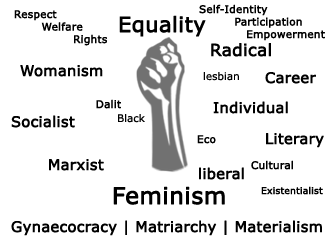Article Title :
Women Authorship of Scholarly Publications in STEMM: Authorship Puzzle 
2(2018)
66-76
Women , Science , Research , Publications , Gender , Feminism , Authorship , Authorship puzzle


The continued underrepresentation of women in scholarly activities slows down the scientific progress of any country. Several studies have analyzed the women representation in authorship of scholarly publications in Science, Technology, Engineering, Mathematics and Medicine (STEMM). Women account only 30% of overall authorship of scholarly articles. Prestigious authorships like first-, last- and corresponding authors also show significant underrepresentation of women. Women as first authors are significantly increasing since last decades; however, growth of last authors is not significant and share of corresponding authors not changed. Women show low overall impact of scholarly publications due to lower productivity but not for quality of publication. This gender authorship puzzle can be solved by adopting gender responsive planning and management. Therefore, systematic efforts to understand the gender disparities in scholarly publications, authorship citations and collaborations require for achieving significant positive change in the share of women in academic authorship, impact and career. The field is new, active, attractive and interesting area of research to achieve gender equality in scientific research and publications for social welfare.

Since the centuries women considered unfit for research and intellectual activities. They have historically less support and access to equipment and facilities for research activities.
Several studies show underrepresentation of women in authorship of scholarly articles in STEMM.
Prestigious authorship positions like first-, corresponding- and last author show underrepresentation of women.
Women authorship of editorials is less with insignificant growth rate.
Lack of research collaborations with different collaboration patterns and networks is important cause of less scientific publications by the women.
Patriarchal culture effects the women participation in scientific activities.
Feminist reforms in education, monitoring and academic publication will be helpful to minimize gender gap in scientific publications.
Family-friendly policies are suggested for more women participation in research and publication activities.
Brinker, A., Liao, J., Kraus, K., Young, J., Sandelski, M., Mikesell, C., Robinson, D., Adjei, M., Lunsford, S., Fischer, J., Kacena, M., Whipple, E. and Loder, R., 2018. Bibliometric analysis of gender authorship trends and collaboration dynamics over 30 years of Spine 1985 to 2015. SPINE, 43(14), E849-E854.
Buckley, H. L., Sciligo, A. R., Adair, K. L., Case, B. S. and Monks, J. M., 2014. Is there gender bias in reviewer selection and publication success rates for the New Zealand Journal of Ecology? New Zealand Journal of Ecology, 38(2), 335-339.
Cho, A. H., Johnson, S. A., Schuman, C. E., Adler, J. M., Gonzalez, O., Graves, S. J., Huebner, J. R., Marchant, D. B., Rifai, S. W., Skinner, I. and Bruna, E. M., 2014. Women are underrepresented on the editorial boards of journals in environmental biology and natural resource management. PeerJ, 2, e542.
Cole, S. and Zuckerman, H., 1984. The productivity puzzle: Persistence and change in patterns of publication of men and women scientists. Advances in Motivation and Achievement, 2, 217-258.
Zuckerman, H., 1968. Patterns of name ordering among authors of scientific papers: A study of social symbolism and its ambiguity. American Journal of Sociology, 276-291.







